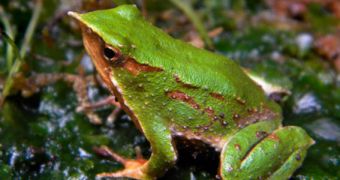The northern Darwin's frog (Rhinoderma rufum) and the southern Darwin's frog (Rhinoderma darwinii) may have been led to extinction by a fungal infection, researchers argue in the latest issue of the open-access journal PLoS ONE. The frogs have not been observed in their environments since 1980.
According to researchers at the Universidad Andres Bello in Santiago, Chile and the Zoological Society of London (ZSL), in the UK, the fungal agent Batrachochytrium dendrobatidis (Bd) may have been responsible for the collapse. The organism was found at all sites where localized extinctions were recorded, Mongabay reports.
If the two species are indeed extinct, then this phenomenon would represent a rare instance of extinction by infection, a process that was only observed a handful of times. Both species of Rhinoderma were discovered by naturalist Charles Darwin in 1834.
Exactly how Bd is able to jump from environment to environment is a mystery. Some believe that scientists themselves carry the spores on their boots, while other say that hikers are responsible. Whatever the case, the disease the fungus created, called chytridiomycosis, is deadly to a large number of frog species.

 14 DAY TRIAL //
14 DAY TRIAL //